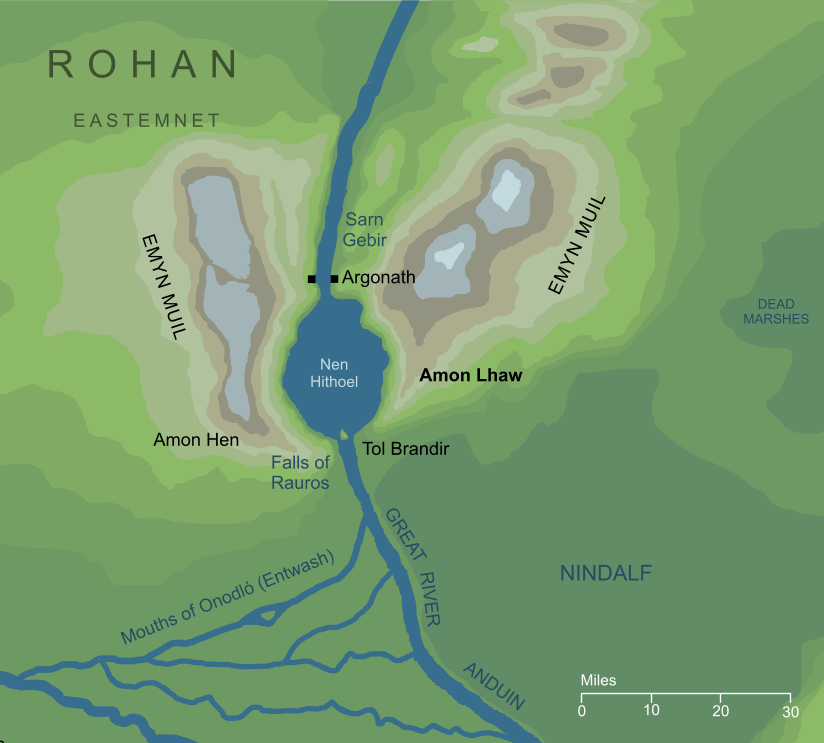- Cities and buildings
- Fields, plains and deserts
- Forests
- Hills and mountains
- Islands and promontories
- Lands, realms and regions
- Rivers and lakes
- Seas and oceans


 |
||||||||
|


Which personality type are you?
Take the Free mydiscprofile Personality Test to discover your core personality and your ideal job.   Which personality type are you? |
|
Dates
Established as the Hill of Hearing in the early days of Gondor, possibly before the end of the Second Age1
Location
The eastern shores of Nen Hithoel, above the Falls of Rauros
Origins
Used as the Hill of Hearing, the counterpart of Amon Hen, the Hill of Sight, by the ancient Gondorians
Race
Division
Culture
Pronunciation
a'mon lh'au2
Meaning
Literally 'Hill of the Ear'3
Other names
Indexes: About this entry:
|
Amon LhawThe Hill of Hearing in the eastern Emyn Muil
The Hill of Hearing that was the twin of Amon Hen, the Hill of Sight. It lay among the Emyn Muil on the eastern banks of the Anduin, above the Falls of Rauros. At one time, centuries before the War of the Ring, it had been part of the northern borderlands of Gondor. Notes
See also...Hill of Hearing, Hill of the Eye, Nen Hithoel, North Stair, Seat of Seeing, Tindrock Isle, Tol Brandir Indexes: About this entry:
For acknowledgements and references, see the Disclaimer & Bibliography page. Original content © copyright Mark Fisher 2000, 2020-2021. All rights reserved. For conditions of reuse, see the Site FAQ. Website services kindly sponsored by Discus from Axiom Software Ltd.Candidate experience is key. The Discus personality test works across every browser and operating system. |